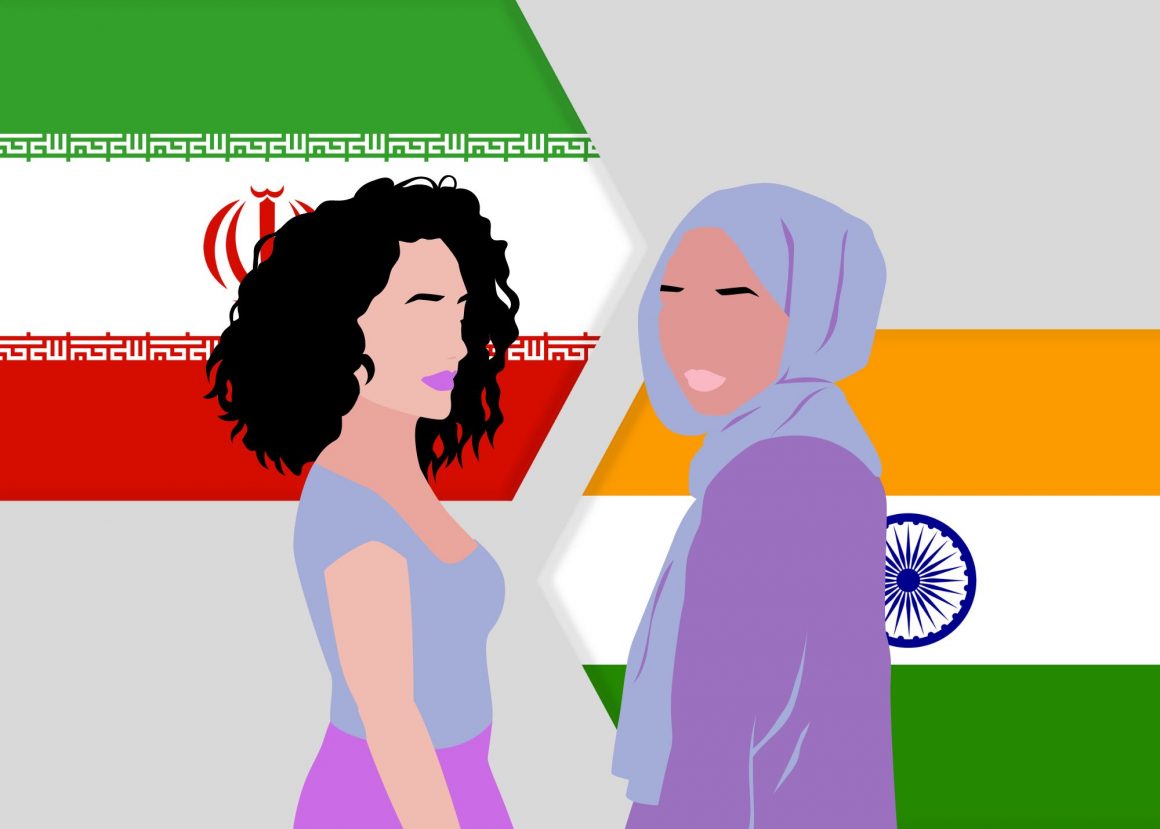
How desire for freedom is uniting women of Iran and India
By Ansharah Shakil, October 24 2022—
Two different countries, two different governments, and two different policies have each led to the same result in Iran and India — women protesting for their rights. In Iran, protestors fight for the right not to wear a hijab. In India, protestors fight for the right to wear a hijab. In both countries the fight is the same, however, the goal is different. This is a fight for freedom.
Iran’s morality police control what women wear, and how they are meant to wear it. The event to bring this into global understanding was the suspected murder of 22-year-old Mahsa Amini by the Iran regime. Iranian women fight for their freedom to not wear a hijab, and for their ensured safety no matter what choice they make regarding their religion. According to government law, the mandatory hijab is enforced to promote Muslim rule, despite many Muslim women not wearing hijabs or only wearing them occasionally.
Amini was detained for how she wore her hijab, but there are no strict rules regarding how head coverings must be worn or how much hair they should obscure. Whether or not the Quran even requires head coverings on women at all is a matter of controversy and up to interpretation. Spirituality becomes oppressive when it extends beyond the individual and their relationship with God, ultimately then the goal being to control others.
The hijab is not meant to be a tool of oppression, but a symbol of faith. Its original meaning is exactly why Indian women are fighting for the right to wear it — and its distorted meaning in Iran is why women are fighting for the right not to wear it.
In India, a government order banning Muslim girls from wearing headscarves in school was enforced in Karnataka. The court ruled that wearing a hijab was not essential to Islam as a religion. Muslims, being one of the largest minority communities in India, have recently come under a wave of religious-based hate crimes.
The protest of Karnataka students, many of whom are only young girls, has inspired women around India to march for their right to wear headscarves or other religious clothing. In India, the reasons behind this fight are twofold. To fight for women’s rights to dress as they would like to and practice their religion as they want to is one. But another is to ensure that Muslim culture is not erased from India.
Those in India who oppose the hijab cannot look to Iranian women as a defence of banning the hijab. If Iranian women were not constantly in danger for wearing a hijab “wrong” or not wearing one at all, protests regarding the hijab would not be occurring. The trouble happens when people police the wearing of this garment. Forcing someone to wear an item of clothing is a violation of rights, but so is forcing someone to remove an item of clothing.
Perhaps the West cannot so easily understand this idea. In many places in Europe, like France and Switzerland, there are partial or total hijab bans. And of course, in Québec, many civil servants are prevented from wearing their hijab. Some of these decisions have caused public outrage — but only briefly. The bans continue. The same goes for places like Afghanistan, which still has a rule enforcing hijabs on all women. Yet making decisions about how Muslim women should present themselves in public should be something only Muslim women can do.
Some might say these two fights in India and Iraq are irreconcilable. A country whose women are burning hijabs has nothing to do with a country whose women are holding fiercely on to theirs. But this is in many ways the same fight — the fight to let women be humans. To let them control their own body. Bodily autonomy or religious freedom, the desire is the same.
The tragedy of Amini and women like her is a tale as old as time. What happened in Iran may happen again in India, or anywhere around the world, and will keep happening unless women are given control of their own bodies and their own self once more. It must be up to them, and not any government, no matter what they call themselves, to decide how they appear to the world.
This article is a part of our Voices section does not necessarily reflect the views of the Gauntlet editorial board.
